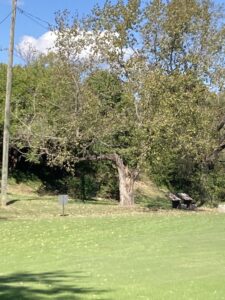Reading the graphic novel Persepolis was very quick and easy to understand. I noticed that the easy language reflects the thinking of the narrator’s age at the time. This gives off a sort of innocence to their thoughts back then which I thought was extremely realistic. After all, who would expect a 10-year-old to have a complex internal monologue? I also appreciated how friendly the language was because it explained complicated historical concepts in a way that I could mostly understand. I usually have trouble comprehending the dynamics of history, so this language was nice to read. The pictures were helpful as well and also portrayed that childlike innocence because the scenes shown about the protests were not graphic. Reading this honestly made me want to read more graphic novels when I don’t feel like reading books.
Category: prep note Page 8 of 24
Reading chapters 1-3 of persepolis was very enjoyable but also made me more aware of how ignorant I am about the history of Iran and the rest of the middle east. I loved the format of this story, and reading a comic book was very enjoyable but also went by quickly. The concept of kids having to be exposed to a political and social climate like this at such an early age is alarming, and I thought it was crazy that at that young of an age she asked to go to social demonstrations/protests where so many people were being killed and injured. I thought it was also interesting that her grandpa was the prince, and how he transitioned through his education and those being surrounded by him into a communist, and being in jail a large portion of his life away from his daughter.
Overall I really enjoyed this read, and would love to engage more with comic book content in the future. I love how a life story or such a serious topic can be presented through a comic, it makes stories very engaging and informative.
One thing I noticed about how the author tells her story is the language she uses. It’s simple and understandable which, in turn, makes her story more digestible. A complex story such as the author’s could be difficult to convey entirely to readers but through the language she used, it’s easy to follow. The language in combination with the pictures tells such a rich story in a simplistic way.
I really enjoy reading comics in general especially the one of Persepolis. I really like the way the author introduces ideas that can be approached by any audience from teenagers to old people. Their language is simplistic, yet powerful, the black-and-white use of colors highlights the contrast and creates a dynamic image throughout the whole book. I find the language really strong and emotional because it is simplistic and innocent and that’s what a reader is expecting from a 10-year-old girl to write. However, within this simplicity really powerful and complex ideas like War religion identity and innocence are conveyed throughout the first four chapters there is a combination of a first and third person which is a really nice balance between giving context and informing the reader to have a better understanding but then use of the first person to give different inside from every Iranian family and specifically from a 10-year-old girl that is experiencing everything in Iran overall it is a really unique and powerful way of communicating ideas that I would like to see being used in more media.
Can the quotes being used come from sources outside of the blog/prep notes? Can I use quotes from my reflections on a personal document?
- How long should the papers be? My draft is 3 pages but I don’t know if I need more or less.
- Do the papers need to be in Chicago style? Or can they be in MLA format?
One question I have about the midterm is how formal the writing is expected to be. And how long is it expected that each of these essays are? and for the second essay I am not sure what is meant by “my society” in the second essay. And for that extra credit point should I continue it in the format of that second essay or make a separate page or paper for that?
One of the first things I wondered was how long to make each of the essays. Is there an emphasis on one over the other, or should one be longer? I’m also not quite sure how to quote myself, or what the thesis should look like for the first essay. I’m not sure what my claim should be – is the idea that I’m arguing that I’ve become a better writer? And if so, is that looking at syntax or feel? Am I picking out early rougher writing and presenting more polished recent writing to show that I’ve improved? And again, if so, should I show improvement in the style of my writing or the focus or something else? Am I looking for a way to show how I improved my writing skills, or should I find a moment where writing helped me learn something about the world or myself?
Also, how should we use first person/third person? Since we’re quoting ourselves, are we allowed to use “I?” And how should we interact with that? Should it be more of a rhetorical analysis or a self-reflection?
The most intriguing part of this field trip was seeing the hanging tree from Lumpkins Jail. In history class, you hear about hangings and cartoons of them in textbooks. Although saddening, we’re either desensitized to it or just don’t take into perspective how terrible this act of execution really was. The fact that I was standing right next to a tree responsible for hundreds of deaths was very gut wrenching. It’s even worse to think about when you consider hanging being known as the most cruel/painful form of death at the time it was done. Going on this field trip and seeing the hanging tree connects straight back to Campbells book, Richmond Unhealed History. Everywhere you go, even if its just passing a tree can tell an entire story about the lives of those oppressed, the oppressors and the history of the city itself.

Unfortunately, I was not able to join the classroom on Thursday due to my sickness even though it was a trip I was really looking forward to. Nevertheless, I am fortunate to read everyone’s notes, especially Anna’s and Nickolas’ Class Notes, which helped me understand the context of the other notes and a really insightful outline of the excursion.
Regarding the assignment, I was wondering about the format and structure of the essays; How long are you expecting the essays to be and what structure should we follow both within paragraphs and in the essay overall?
Could we have any examples of what learning moments or quotes are? Are the learning moments a realization or a learning curve over the semester? Could we talk more about the evidence you are expecting us to use in the classroom? Are there any previous learning portfolios we could read?
Finally, I read the essay rubric and it seems that it adds up to 9 points and not 10.
